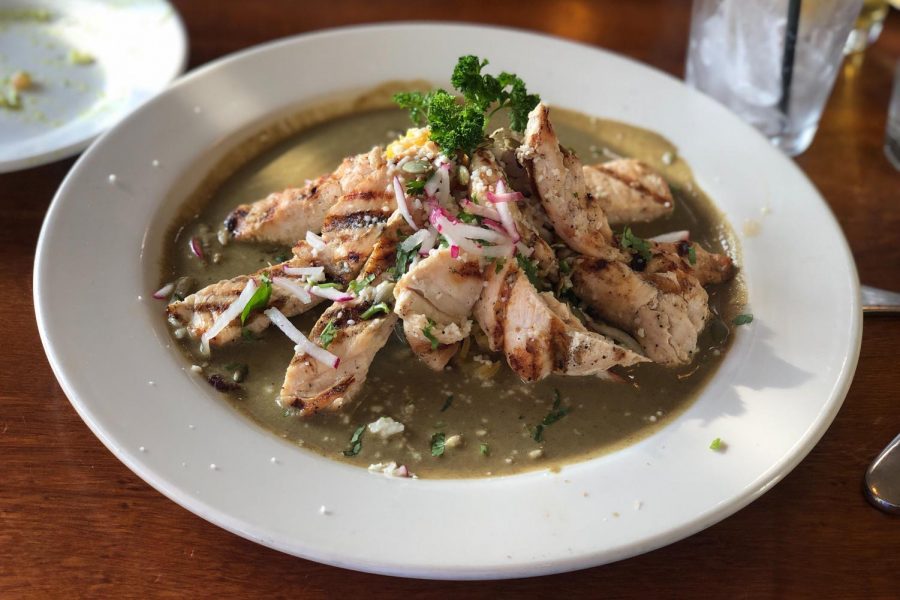from top left (clockwise), photos by: Nikhil Patel, Madeline Welch, Berk Oto, Minghin Cuisine
More than a meal: The diversity of Chicago eats
November 11, 2019
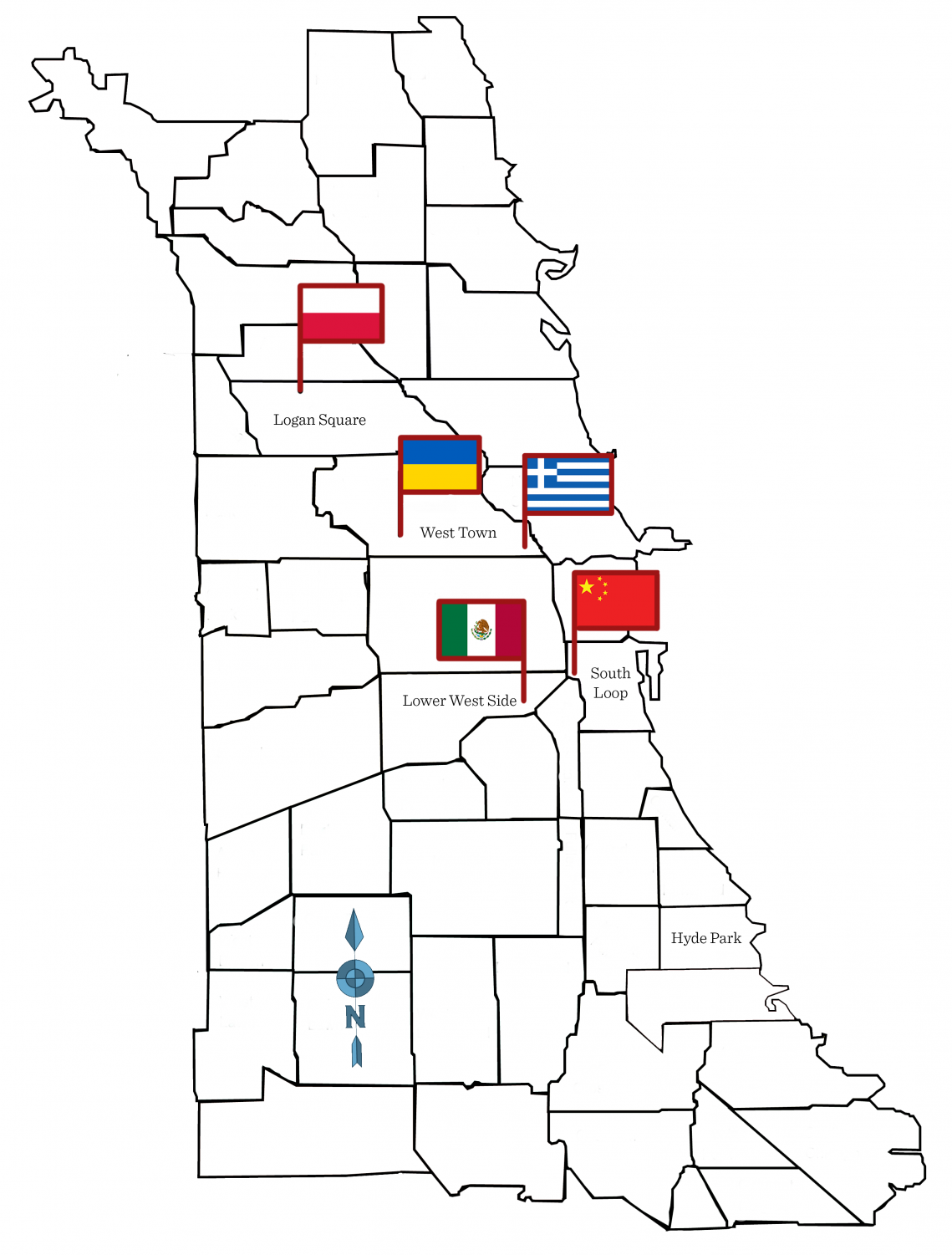 From Chinatown to Logan Square, students use Chicago’s varied ethnic neighborhoods to connect with their heritage. Midway writers reviewed several restaurants in ethnic neighborhoods around the city with students who find their heritage there. Greek Islands, Staropolska, Tryzub, MingHin Cuisine and Artopolis are all restaurants the Midway recommends.
From Chinatown to Logan Square, students use Chicago’s varied ethnic neighborhoods to connect with their heritage. Midway writers reviewed several restaurants in ethnic neighborhoods around the city with students who find their heritage there. Greek Islands, Staropolska, Tryzub, MingHin Cuisine and Artopolis are all restaurants the Midway recommends.
Greektown provides taste of home
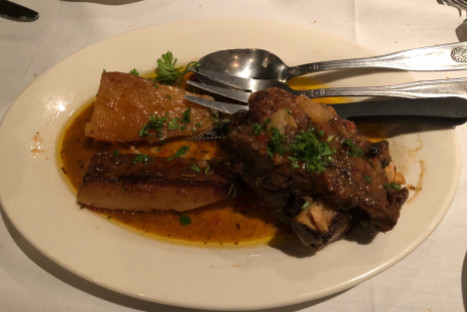
This dish is arni fournou (lamb loin with potatoes), served at Greek Islands in the West Town neighborhood. Greek Islands has a transporting atmosphere and good authentic food for a fair price.
 Nestled in a corner of the I-90 and I-290 expressway, conveniently wedged into a one-block wide stretch, and within walking distance from Grant Park, Greektown is one of the most accessible of Chicago’s many ethnic villages. Filled with restaurants, boutiques, and other shops with a Greek twist, it’s become a place for senior Ioannis Nikas to connect with his Greek heritage outside of his home.
Nestled in a corner of the I-90 and I-290 expressway, conveniently wedged into a one-block wide stretch, and within walking distance from Grant Park, Greektown is one of the most accessible of Chicago’s many ethnic villages. Filled with restaurants, boutiques, and other shops with a Greek twist, it’s become a place for senior Ioannis Nikas to connect with his Greek heritage outside of his home.
“Most times [I go] for food,” Ioannis said. “Either we actually sit down at a place to eat or we go to this small supermarket that has imported stuff. However, we do go once or twice a year for cultural events. For example, every year there is a parade there for Greek independence day.”
Greek Islands, at the corner of Halsted and Adams streets, is a restaurant where Ioannis often goes for delicious Greek food. In fact, he goes so often that he knows the family that owns the restaurant.
“It’s a family-owned business,” Ioannis said. “They own both the stores, here and in the suburbs.”
As soon as we entered, it felt as though we were transported to a different place. The entrance is a long hallway, with fish laying in ice on a fake hawker’s stand on one side and a shelf filled with amphoras and other jars on the other. The restaurant had little wait at 6 p.m. on a Friday, and Ioannis conversed in Greek with the host.

“Since I’m Greek, being in a place where so many people speak the language makes you feel at home in a way,” Ioannis said. “I really like the atmosphere and the music in the background that reminds me of Greece. And of course the food only makes this feeling stronger.”
We ordered tirokafteri (feta cheese blended with peppers) and melitzanosalata (eggplant blended with garlic, potatoes and olive oil) alongside grilled octopus and fried zucchini with skordalia, a traditional garlic sauce. For a main meal, we had saganaki (fried cheese) and arni fournou (a lamb loin served with potatoes). All-in-all, the meal came down to about $20 a person.
“It’s definitely good,” Ioannis said. “They do a great job of recreating the flavors for foods that we ordered. If you get some other stuff it would be better, and for others, worse, but for what we got, it was solid.”
“My favorite thing about it is that I really feel like I’m in Greece for a little moment,” Ioannis continued.
Just a block and a half south lies Artopolis, a self-described “bakery, café and agora.” With an open seating plan and stands for coffee, baked goods and Greek gifts like honey, olive oil and marinated onions, Artopolis fulfills all three of those descriptors. Ioannis goes for the food and the community.
“They are probably the best Greek bakery in the city, so that’s enough for me to love the place,” Ioannis said. “On top of that, the place is usually filled with Greek people since it’s a café as well. During events like the World Cup, places like it are an awesome environment to be in to support your country’s team.”
Galaktoboureko and melomakarono are just a few traditional greek pastries served at Artopolis.
The galaktoboureko, a pastry made of custard between two sheets of pastry, and the melomakarona, a traditional honey cookie with an almond inside, were Ioannis’ choices.
Although he doesn’t go to Artopolis very often, he recommends it as a good choice for a casual Greek dining experience.
For Ioannis, Greektown serves as a great place to enjoy his Greek heritage and not just eat good Greek food. The people and the places remind him of his Greek heritage.
“Like this stuff [is traditional Greek food]” Ioannis said. “Seasoned meat and seafood.”
Greek Islands: 200 S. Halsted St.
Artopolis: 306 S. Halsted St.
Table hard to find at MingHin Cuisine

provided by MingHin Cuisine
Barbecue pork buns sit in a steamer basket at MingHin Cuisine. The buns are a popular part of their expansive Dim Sum menu, which is designed for sharing.
 Situated just at the entrance of Chinatown, MingHin Cuisine is one of the most popular restaurants in one of Chicago’s most popular neighborhoods. For some, the environment may feel foreign — perhaps even hostile. To Zach Gin, a frequent customer, it’s an extension of his dining room.
Situated just at the entrance of Chinatown, MingHin Cuisine is one of the most popular restaurants in one of Chicago’s most popular neighborhoods. For some, the environment may feel foreign — perhaps even hostile. To Zach Gin, a frequent customer, it’s an extension of his dining room.
Zach, who eats at MingHin once or twice a month, says it isn’t just a spot for great Chinese food — it’s a reminder of his heritage, culture and family.
“Of course, I love the variety of Chinese foods, like the dim sum, and the normal dishes are all really good,” Zach said. “But since I usually go to Ming Hin with my whole family, every time I go there it is kinda like a reminder of all the experiences I’ve shared with my relatives.”

“Being Chinese makes me feel as if my experience with the restaurant is me getting in touch with some aspects of my parents and my culture,” Zach said. “It definitely makes me appreciate the restaurant more.”
MingHin is a hub of Chinatown and is always crowded according to Zach. We went during the dim sum hours, when customers can order small plates like special dumplings, potstickers and buns, and we had to wait for a solid 20 minutes. The wait was, surprisingly, anything but boring.
The atmosphere was electric. Waiters scrambled, scribbling orders, and the chatter of the chefs was audible in the dining room. Most surprisingly, though, was the “you snooze you lose” mentality when waiting for a table. Upon checking in, you get handed a handwritten yellow Post-It with a number.
The waiters, shouting above the bilingual hubbub of the restaurant, repeat a number four or five times. If nobody comes forward, the next number is called without hesitation.
If you do get a table, the stressful wait will have been worth it.
“The food is great: it has a ton of traditional Chinese dishes, along with other more unique dishes,” Zach said.
We tried dim sum plates, the highlights of which included barbecued pork buns, fried potstickers and short ribs with honey sauce.
The meat was the highlight of the afternoon. All three dishes were cooked to tender, flavorful perfection, barely requiring any additional sauce. For a vegetarian option, the pan fried vegetable roll was sublime, although it was the slightest bit greasy.
Once seated, the service is anything but stressful — you are greeted with the option of a selection of hot herbal teas as well as an easy-to-read menu. The servers are polite and helpful, despite the clear rush they are in.
The food is both inexpensive and delicious, but also has very large portions. Often, many of the plates are made for the purpose of sharing, so are bite-sized. Many food items are easy to take to go.
So the next time you and your family are considering a night in Chinatown, take a page out of Zach’s book (or menu), and give MingHin Cuisine a try. As long as you can claim your table, it’ll be well worth it.
MingHin Cuisine: 2168 S. Archer Ave.
5 Rabanitos: hidden gem for Mexican food
This is pollo en mole verde, a traditional Mexican dish served at 5 Rabanitos, a restaurant in Pilsen. 5 Rabanitos serves great food and is located only a block northeast of the National Museum of Mexican Art, making it an excellent place for a lunchtime excursion.
 In an unassuming building on a street corner in Pilsen, one block northeast of the National Museum of Mexican Art, lies 5 Rabanitos, a lively lunch and dinner restaurant and a great place to eat authentic Mexican food. From the moment you walk into the restaurant, you are greeted by the sights, smells and sounds of a different world: A cacophony of bilingual chatter, the sizzles of carne asada and the gobbling of satisfied customers.
In an unassuming building on a street corner in Pilsen, one block northeast of the National Museum of Mexican Art, lies 5 Rabanitos, a lively lunch and dinner restaurant and a great place to eat authentic Mexican food. From the moment you walk into the restaurant, you are greeted by the sights, smells and sounds of a different world: A cacophony of bilingual chatter, the sizzles of carne asada and the gobbling of satisfied customers.
Pilsen, the main neighborhood of the lower west side, has developed into a mecca of Latino culture — translating into beautiful artwork, incredible museums and, of course, delicious food. All around the building and the surrounding neighborhood, beautiful murals depict aspects of a variety of cultures.

Inside, the walls of the restaurant scream Mexican culture with their rustic beige, green and blue color and varieties of Mexican art. The restaurant never fails to impress with the bursting, spicy flavor of the salsa and the tender, juicy texture of the meat. The warm, crunchy tortilla chips secure 5 Rabanitos’ status as a Mexican food fanatic’s heaven.
But given the already small size of the restaurant and the exquisite flavor of the food, it is always a challenge to find a table at 5 Rabanitos. And, if you do find a table, don’t be surprised if it is unsettlingly close to another group; the atmosphere, while friendly and inviting, can be, at times, claustrophobic due to the restaurants location, size and popularity.
5 Rabanitos is also very close to the National Museum of Mexican Art, which is a very important part of Pilsen and Mexican art throughout the country.
The menu includes a variety of Mexican meats and dishes, satisfying both those familiar with Mexican cuisine, as well as first-time visitors. From taco dinners to pollo en mole verde, they have perfected their recipes after years of practice. The food is always laid in aesthetic forms that equal the intensity of the flavors of all the dishes served.
The pollo en mole verde is popular for its earthy flavor and the darkness it adds to the chicken it comes with. The mole sauce was spread at the bottom of the plate while a pyramid of chicken concealed arroz a la Mexicana and black beans. The original flavor from Oaxaca is unique and perfected by 5 Rabanitos.
If you are in the Pilsen area, 5 Rabanitos is a great place for a quick snack or to hang out with friends — if you can get a table.
5 Rabanitos: 1758 W. 18th St.
Yelp Reviews
Polish spot provides comfort

A plate of grillowana polska kiełbasa (grilled Polish sausage) lies on a table at Staropolska. The comforting atmosphere reminds Gabby Gruzska of her Polish heritage.
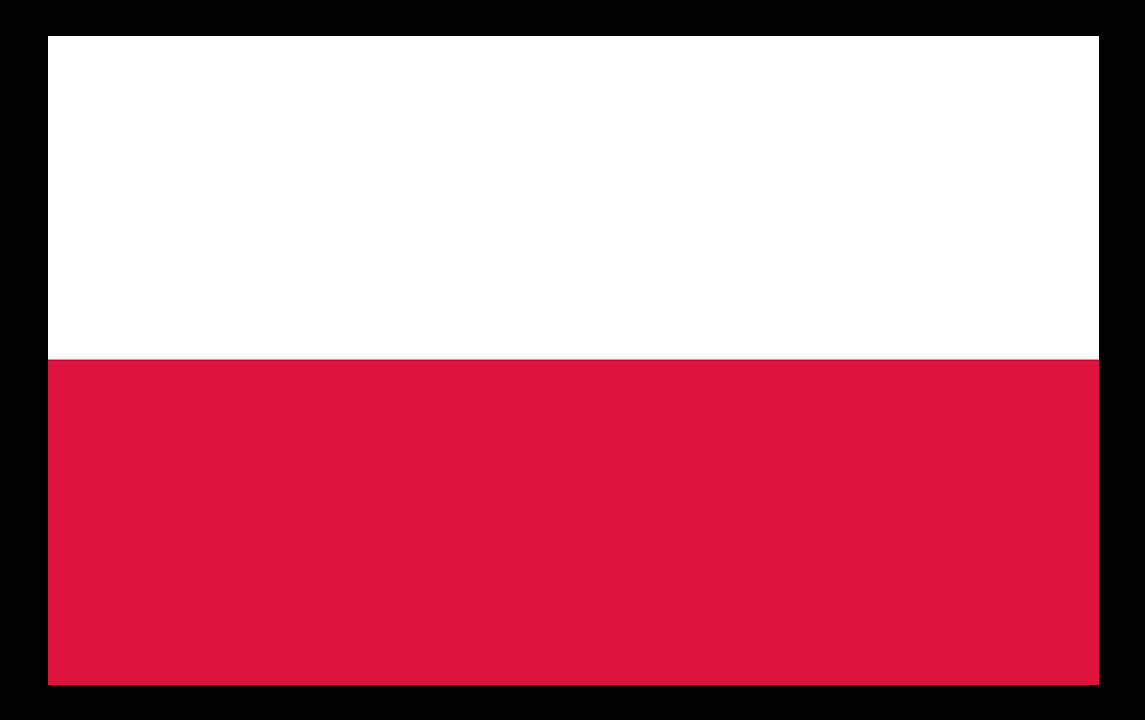 The heavy, black chandeliers dimly light the walls with faded paintings of Poland. A wooden ladder hangs suspended from the ceiling above the tables. Animal hides and antlers accessorize the walls without illustrations. This is Staropolska, a rustic Polish restaurant in Logan Square and Gabby Gruzska’s favorite Polish restaurant in all of Chicago.
The heavy, black chandeliers dimly light the walls with faded paintings of Poland. A wooden ladder hangs suspended from the ceiling above the tables. Animal hides and antlers accessorize the walls without illustrations. This is Staropolska, a rustic Polish restaurant in Logan Square and Gabby Gruzska’s favorite Polish restaurant in all of Chicago.
For Gabby, a senior of Polish descent, Staropolaska reminds her of her family and happy memories of spending time with them in Poland.
Gabby’s father found Staropolska when he first moved from Poland. The ambiance is comforting — all the staff and most of the customers speak Polish — and the cuisine is purely traditional Polish food.
Speaking to the waiter in Polish, Gabby orders tatar po polsku (steak tartare), placki ziemniaczane (potato pancakes), Ruskie (potato and cheese pierogies) and grillowana polska kiełbasa (grilled Polish sausage).
The steak tartare is presented in a neat patty with a raw egg yolk with finely chopped onions and pickles on the side. Gabby ate it as a sort of meat spread atop bread.
“You can’t tell that the meat is raw because of the olive oil, seasoning, lemon and vinegar in it,” Gabby said.

Next are potato pancakes with applesauce and sour cream for dipping. Gabby prefers this Polish way of serving them because it makes the potatoes less heavy. Gabby’s largest complaint of Polish food is that its extremely filling, so variations like these make traditional meals more enjoyable for her.
The next dish was potato-and-cheese pierogies served with bacon bits on top and sour cream on the side. The savory dumplings made of potato encased warm, creamy cheese and potato mixture. Gabby bonds with her family over making pierogies at home.
Finally, we had grilled Polish sausage with fried onions, pickles and horseradish. The sausage was a combination of pork and beef, and was grilled to a golden brown. It had a strong garlic flavor and the horseradish added some light spice.
“Polish cuisine ties into my culture and heritage because it is what brings my family close,” Gabby said. “From a young age, my babcia (grandma) and I would peel potatoes, make pierogies and make other Polish food together. That’s why it is so important to me. Eating Polish food reminds me of being in Poland with my family and all the good times that we had sitting at the table for lunch, enjoying a ‘typical Polish meal.’”
Staropolska: 3030 N. Milwaukee Ave.
Tryzub offers Ukrainian taste

An artfully presented plate of sarma (stuffed cabbage) is served at Tryzub in Chicago’s Ukrainian Village. The language and design of the interior are evocative of eastern European culture.
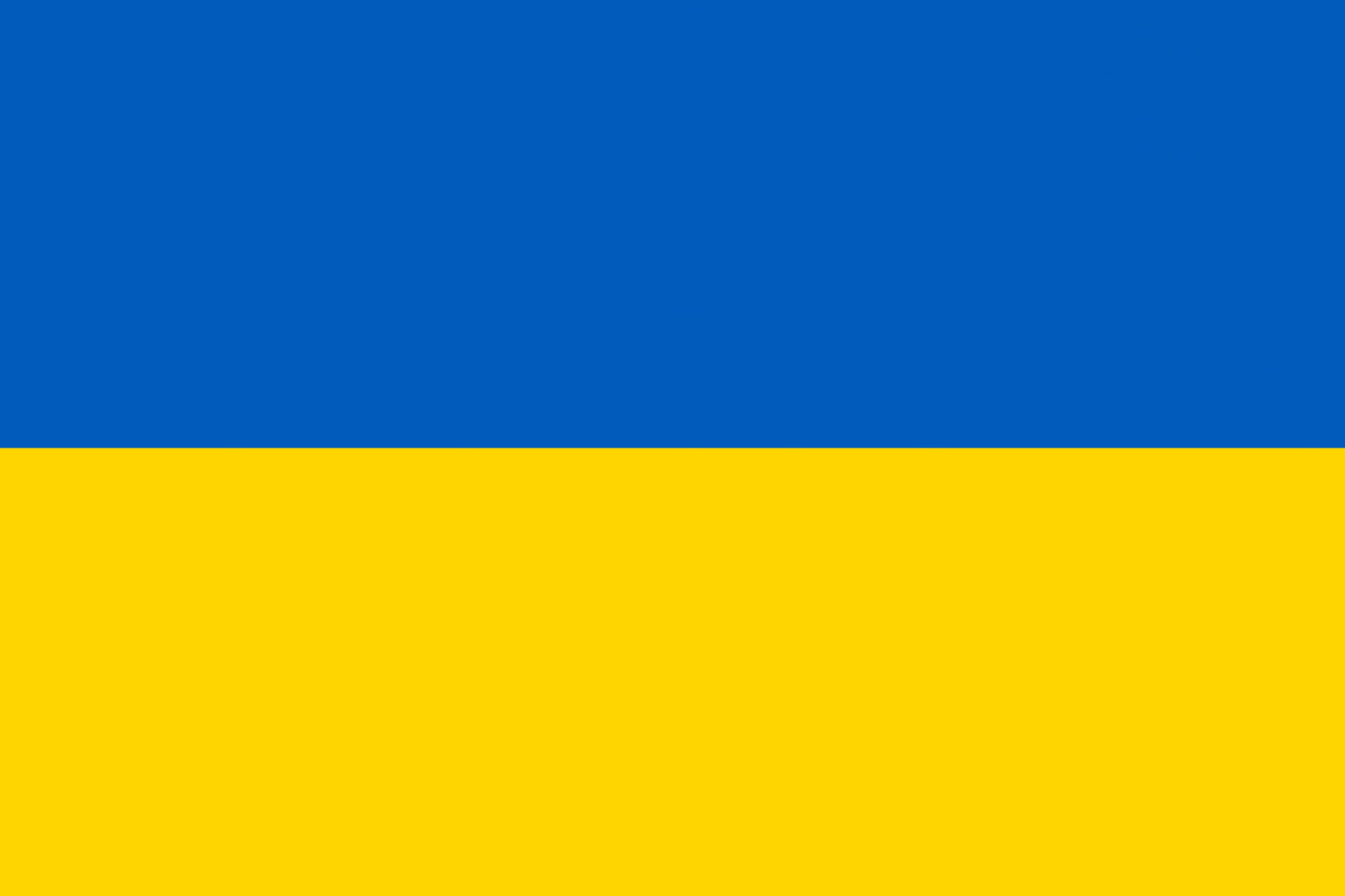 Colorful interior, old-timey portraits and the sound of Ukranian being spoken among staff at high-speed wash over me as I walk into Tryzub Ukrainian Kitchen in Chicago’s Ukrainian Village with sophomore Vaso Micic.
Colorful interior, old-timey portraits and the sound of Ukranian being spoken among staff at high-speed wash over me as I walk into Tryzub Ukrainian Kitchen in Chicago’s Ukrainian Village with sophomore Vaso Micic.
“As soon as I walk in, I was transported into a new world which is more familiar to the Eastern European portion of my identity,” said Vaso. “It’s the small things — the way the photos arranged, the designs on the plates on the wall — that make this place so representative of Eastern European culture. I guess it kind of reminds me of my grandmother’s house.”
After being seated, we noticed that people around us were speaking a symphony of various languages. Though the restaurant was Ukrainian, there were plenty of diners speaking other Eastern European languages.
Vaso was able to recognize some of them because even though he was born in Indiana, he has spent a lot of time residing in both Serbia and Russia and is familiar with languages in the region.

“We all have similar ingredients that we work with. Countries in that region just have different names for the same thing,” Vaso said.
These ingredients include pork, mushrooms, cabbage and peppers which make up much of the menu at Tryzub.
As a starter, we ordered stuffed cabbage, and for the main course, Vaso ordered shashlik (chicken kabobs) and I ordered sarma (stuffed cabbage).
“I taste a mustard-like seasoning on the chicken,” Vaso said. “My grandmother used to serve a similar seasoning with her shashlik.”
Though kebabs are not traditionally considered Serbian, the dish is very popular in the country, according to Vaso. This is likely due to 400 years of Ottoman influence and occupation in the area.
“The sarma you are eating reminds me of my dad because it’s his favorite food. Though I’m not really a fan, he always wants to have it when he comes to visit from Russia,” Vaso said.
Tryzub: 2201W. Chicago Ave.

